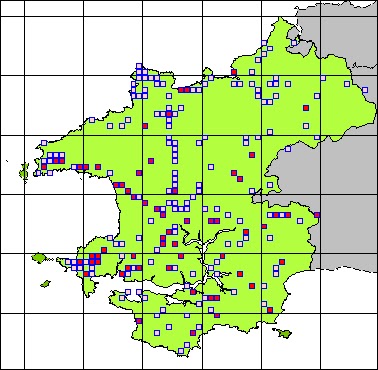My attempts to update the maps etc have been continually frustrated, usually by work, often by a series of small interruptions. So here are the maps as they stand. Mammals only - the reptiles and amphibians will have to wait til later. They are compiled from most of the records I have up the end of 2012 - so I hope there will be many more coming in over the next few weeks.
A list of mammals, reptiles and amphibians seen within a hundred metres of your home would be useful - together with the postcode if you don't have a grid reference. Don't forget those everyday creatures such as rabbits, moles (molehills) , mice, voles and shrews.
If you know of a barn owl nesting or roosting site, winter is a good time to collect a few pellets (without disturbing the birds) so they can be examined for the remains of rodents and shrews.
Any records, of any mammal or herptile, anywhere in the county are welcome. Just send your name, the date, the place (preferably with a grid reference, or the nearest village), the species, and what it was doing (even if it was dead, it's a useful record).
Thanks
Annie
Pembrokeshire Mammal and Herptile Recorder.
PS - I've already been told that the grey squirrel map is missing - apologies to the squirrels!



























